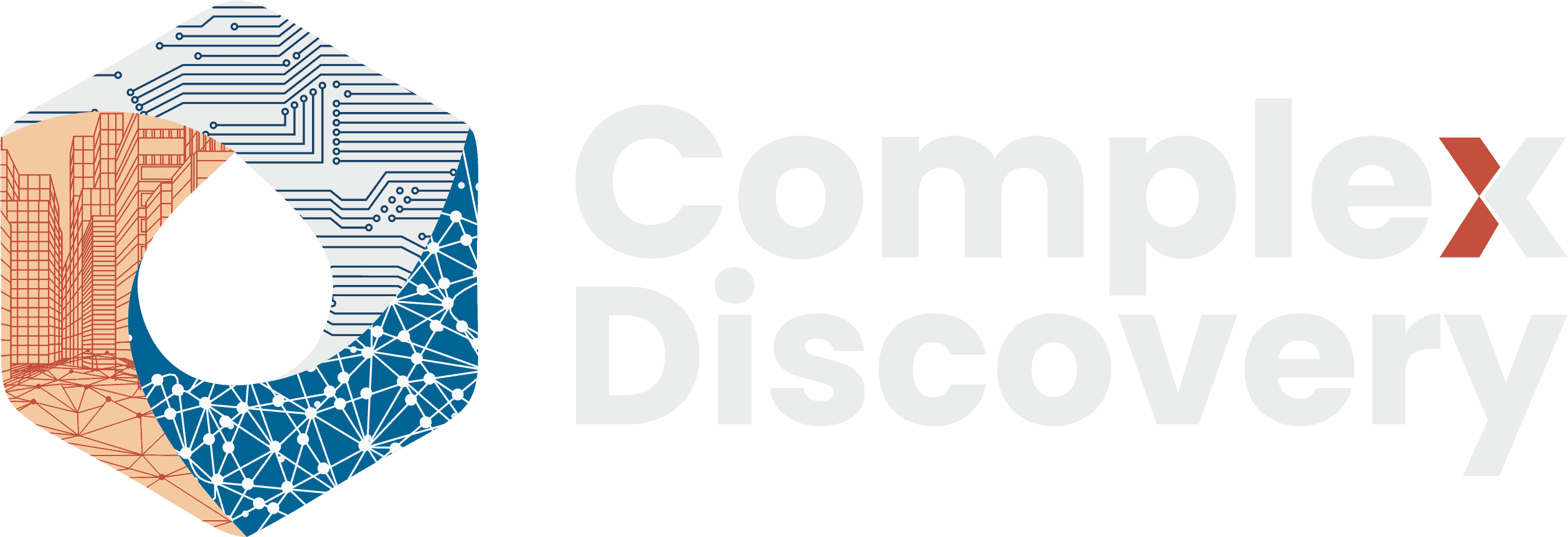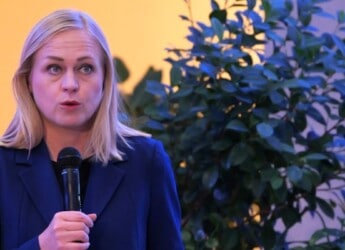Editor’s Note: The International Legal Technology Association Conference (ILTACON) is one of the world’s premier annual gatherings for professionals at the intersection of law, business, and technology. Drawing thousands of lawyers, technologists, executives, and innovators each year, ILTACON serves as a barometer for the trends transforming the global legal sector—from artificial intelligence and process modernization to client service innovation.
At ILTACON 2025 in National Harbor, Maryland, longtime industry analyst and strategist Reena SenGupta delivered a keynote for professionals in cybersecurity, legal technology, and information governance. Her seven “evolutions” of legal practice—grounded in nearly three decades of research and advisory work—offered a practical framework for building legal services that are proactive, multidisciplinary, and sustainable. Her organic metaphor of the law firm as a living organism, particularly as a fungal network, invites legal technologists to embrace their role in connecting knowledge, powering insight, and delivering meaningful experiences. For legal technology professionals, the address highlights the urgency of adopting data-enhanced judgment, predictive tools, and integrated teams to remain relevant and resilient.
Content Assessment: From Fungus to the Future: Reena SenGupta Challenges Legal Industry at ILTACON 2025 to Rethink Its Roots
Information - 92%
Insight - 95%
Relevance - 94%
Objectivity - 95%
Authority - 96%
94%
Excellent
A short percentage-based assessment of the qualitative benefit expressed as a percentage of positive reception of the recent article from ComplexDiscovery OÜ titled, "From Fungus to the Future: Reena SenGupta Challenges Legal Industry at ILTACON 2025 to Rethink Its Roots."
Industry News – Technology Beat
From Fungus to the Future: Reena SenGupta Challenges Legal Industry at ILTACON 2025 to Rethink Its Roots
ComplexDiscovery Staff
SenGupta, who currently leads the global think tank RSGI, has spent nearly 30 years advising law firms, Big Four accounting firms, and corporate legal teams. She is perhaps best known for creating transformative assessment programs such as the FT Innovative Lawyers initiative and the Chambers & Partners guides. But this year at ILTACON, her first appearance at the event in 12 years, her focus was different. Her aim was nothing less than a cultural shift: helping the legal profession create a sustainable future—not only environmentally, but economically, technologically, and socially.
Her metaphor—one that would frame the entire address—was organic, not mechanical. She likened the law firm of tomorrow to a fungal network. Mycelium, the thread-like structures that form the backbone of fungal ecosystems, serve as connectors, recyclers, and communicators in nature. To SenGupta, they offer a blueprint for law firms that must become less hierarchical, more inclusive, and deeply intertwined with the clients and communities they serve.

To support this vision, she walked the audience through seven core “evolutions” observed from her team’s expansive research, including more than 2,000 innovation submissions analyzed annually through the FT program. These evolutions, she explained, are not speculative—they are already underway.
The first is a departure from legal advice rooted in memory, intuition, and individual judgment. Instead, she described a shift toward “data-enhanced judgment,” where generative AI and internal data sources augment lawyer decision-making. This is not about replacing judgment, she emphasized, but about amplifying it. Firms like Herbert Smith Freehills are already capitalizing on this transition. Their “Genesis Arbitration” product aggregates litigation data to give lawyers a strategic, portfolio-wide view of disputes, moving them from tactical advisors to trusted business counselors. At Latham & Watkins, internal private equity and M&A deal databases help knock down silos and accelerate learning curves for junior lawyers, improving client service and strengthening institutional knowledge.
From this base of data-enhanced insight, SenGupta pointed to a second evolution: the move from precedent to prediction. AI, she argued, is forcing law firms to confront a new reality where the most successful lawyers are not just interpreting the past but anticipating the future. DLA Piper’s “Compliance-as-a-Service” product exemplifies this. By running AI across client data, the firm can spot minor compliance issues—”embers,” as SenGupta called them—before they become “forest fires.” Similarly, Paul Hastings has restructured its white-collar investigations practice in Asia-Pacific to proactively detect risks through anomaly detection and forensic accounting. These examples underscore a deeper shift: lawyering is becoming less about reacting and more about foreseeing.

As her examples unfolded, the third evolution emerged naturally: a breakdown of the divide between legal and non-legal roles. SenGupta described this as the convergence of content and form. In traditional law firm structures, attorneys have been the product; everyone else was support. But that model is collapsing under the weight of client expectations. “The form,” she noted, “has become as critical as the content.” White & Case’s integration of project managers into client teams and DLA Piper’s consulting unit, now working hand-in-glove with lawyers, are not exceptions—they are signals. Hogan Lovells’ delivery arm, Eltimate, helped one client sell at a premium. These multidisciplinary teams are not optional—they’re becoming essential.
The fourth evolution centers on how legal services are delivered and priced. SenGupta drew a clear distinction between commoditization—long the fear of high-end practitioners—and productization, which she sees as the more likely path forward. “Historically, firms struggled to maintain legal products,” she said. “But generative AI has poured lighter fluid on the fire.” White & Case’s redlining tool, once a pro bono service, is now a sellable product. Spanish firm Garrigues, while designing their internal generative AI tools, accidentally created software that solves the entailment problem in large document reviews—a breakthrough now attracting commercial attention. In these examples, legal knowledge is being packaged, scaled, and sold—not diluted. The shift toward subscription-based legal services is accelerating.
Naturally, this progression leads to the fifth evolution: moving from services to experiences. “Experiences are memorable,” SenGupta said, “and clients will pay for the experience itself.” The experience economy has arrived in law. Davis Wright Tremaine’s tool, DWT Pros, trains lawyers to communicate in plain, clear language, modeled after the firm’s most effective partners. Over 1,200 employees use it daily. Meanwhile, Hogan Lovells is applying AI to personalize client deliverables by training large language models on each client’s unique contracting preferences and stylistic conventions. This isn’t customization—it’s personalization at scale, and it’s made possible by AI.

But if the profession is to deliver genuinely impactful experiences, SenGupta argued, it must embrace a sixth evolution—one perhaps the most human of all: empathy. And not as a “soft” skill, but a “hard” one. Drawing inspiration from Don Draper of Mad Men fame, she described the future lawyer as one who can walk in a client’s shoes, narrate their story, and understand their product at a visceral level. The legal industry, she said, must become more emotionally intelligent, and this includes legal technology professionals, who often design and maintain systems that interface directly with client data and user experience.
What follows empathy, she asked? Wisdom. And then, perhaps, something even more advanced: metacognition and systems thinking. “Partners,” she explained, “will need to straddle more than one system—law, technology, business, and client industries.” Some firms are already experimenting. Reed Smith’s innovation team is now run by an anthropologist, signaling a deeper appreciation for interdisciplinary insights.
The final evolution she addressed dealt not with practice, but with ownership. While many in the audience might assume law firm structure is fixed, SenGupta revealed that private equity investment in UK law firms reached £534 million in 2024—half the total PE investment in the sector to date. That number is projected to double in 2025. Firms like Garfield AI are emerging, often founded by veteran partners energized by the potential of AI and alternative business models. More strikingly, traditional firms are now retaining profits to invest in R&D, forming adjacent consultancies, and even establishing legal tech venture funds. This change in mindset marks a departure from the old model of maximizing partner payouts and signals a willingness to think—and act—like true businesses.

By the end of her talk, SenGupta circled back to her original metaphor. “The mushroom is the fruit,” she said, “but the real power is in the mycelium.” In the same way, the visible law firm—its partners, its offices, its brand—is only one part of the organism. The knowledge, the systems, the data, and the cross-functional intelligence embedded beneath the surface—that’s where the growth happens. That’s where sustainability lies.
For legal technology professionals, her message was a clear call to action. Their role is no longer peripheral—it is foundational. In an industry moving from intuition to insight, from static hierarchies to intelligent ecosystems, their work in knowledge management, AI implementation, and client experience will define the value of law firms in the decade to come.
“Think of your firm not as a machine,” SenGupta concluded, “but as an organism. Living, breathing, evolving.” And with that, the room stood still—not just in applause, but in reflection.
News Sources
- SenGupta, Reena. (2025, August 13). Helping the Legal Industry to Create a Sustainable Future. [Conference session transcript]. ILTACON, 2025, National Harbor, MD.
- ILTACON
Assisted by GAI and LLM Technologies
Additional Reading
- From Bates Stamps to Bots: ILTACON Roundtable Traces Legal Tech’s Leap from TAR to AI
- What’s Your Pink Cadillac? A Morning of Joy and Resilience at ILTACON 2025
Source: ComplexDiscovery OÜ








































